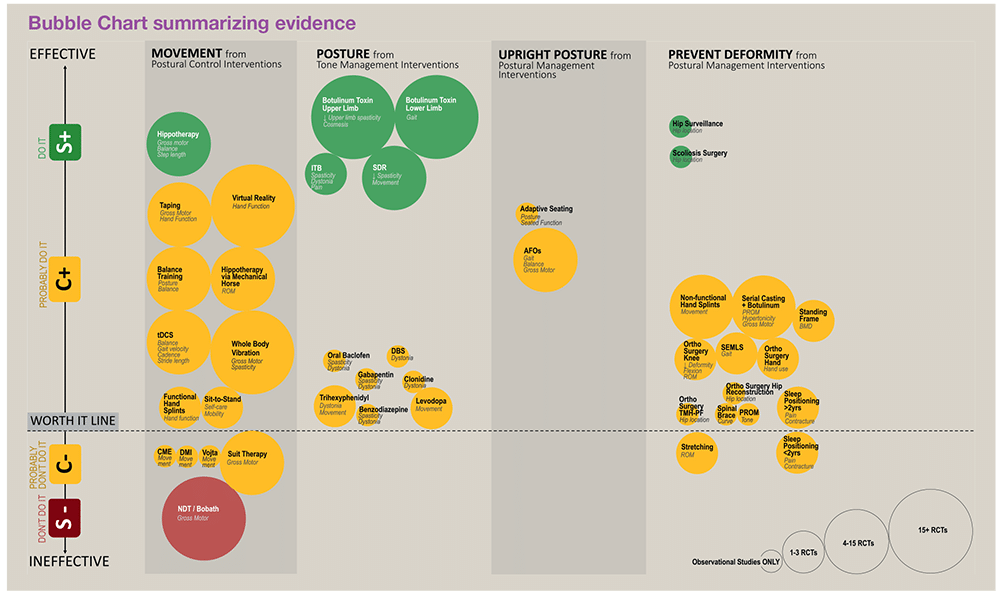
Improved posture can help make it easier to sit or stand without support, decreasing fatigue, pain and discomfort in daily activities. Proven, evidence-based therapy – such as those in the cerebral palsy treatment guides – can lead to greater independence, comfort, and overall quality of life for people living with CP.
Contributions to the study were made from a team of CPA clinicians and clinician-researchers who found:
For children who can walk:
For children who cannot walk or sit:
The paper, entitled Effectiveness of postural interventions in cerebral palsy: umbrella systematic review, evaluates the quality and effectiveness of various interventions aimed at improving movement and preventing complications associated with CP. It has been published in Paediatrics & Child Health, an authoritative and comprehensive essential learning resource for international paediatricians and child health care specialists.
As part of the paper, research gathered from the last 15 years has been translated into an accompanying ‘bubble chart’ that categorises, at a glance, more effective and less effective evidence-based interventions.
“We hope the ‘bubble chart’ we have developed helps clinicians quickly see how much evidence exists for an intervention, and how effective it is likely to be. This will also aid discussions with clients and families, assisting decisions about the best postural interventions for individual people’s goals,” said Monica Toohey, Senior Research Therapist and lead researcher on the paper.
Key information:
Importance for clinicians: The findings of this review are helpful for clinicians. By offering evidence-based recommendations, it assists in the selection and implementation of interventions tailored to individual patient goals. However, it also highlights the need for improved study designs and better reporting to increase the certainty of these recommendations. Clinicians should also consider other interventions known to improve function, as outlined in the 2021 guideline, Interventions to improve physical function for children and young people with cerebral palsy: international clinical practice guideline, led by Michelle Jackman.
Next steps: The review suggests the development of consensus guidelines for outcome measures and encourages trials designed with the Medical Research Council (MRC) Framework for Complex Interventions. These steps are essential for advancing the evidence base and improving the care of individuals with CP.
We believe this paper will be a significant resource for our team and the broader medical community in assisting the quality of care for those with cerebral palsy. It was written by members of the Cerebral Palsy Alliance Research Institute team and collaborators: Monica Toohey, Remy Blatch-Williams, Kristian Budini, Astrid Ferreira, Alexandra Griffin, Ashleigh Hines, Michelle Jackman, Karin Lind, Jill Massey, Maria Mc Namara, Jenna Mitchell, Catherine Morgan, Esther Norfolk, Madison CB Paton, Daniel Polyblank, Sarah Reedman and Iona Novak.
Congratulations to the research team for another significant contribution to the world of research and therapy in cerebral palsy!
Access the abstract here: https://www.paediatricsandchildhealthjournal.co.uk/article/S1751-7222(24)00080-5/abstract

‘Bubble chart’ helps clinicians improve the lives of people with CP